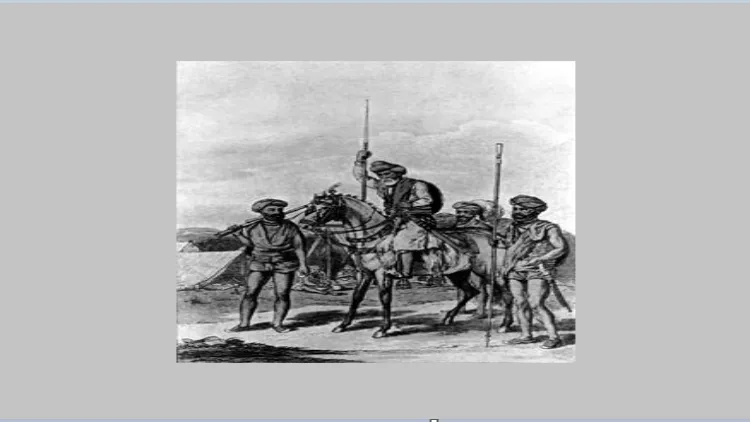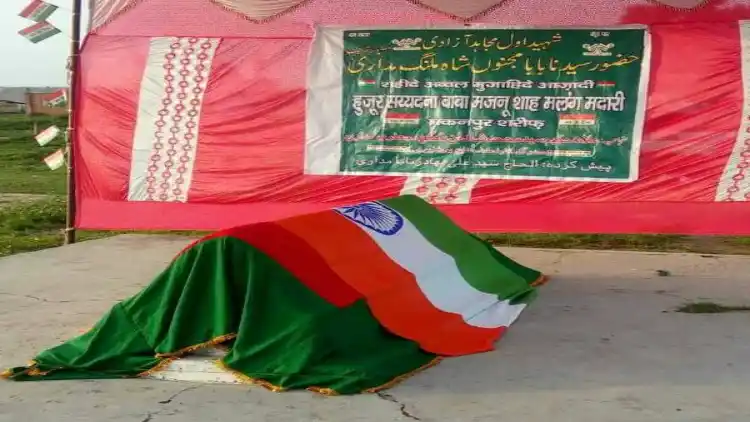
 Saquib Salim
Saquib Salim
The British Raj, right from its inception, was resisted by the Indians. Defeats of the royal armies at Plassey, in 1757, and Buxar, in 1764, did not put an end to the resistance against the foreign colonial power. The peasants and commoners rose up in arms against the Raj.
Often it is believed, or the ‘colonial intellectuals’ have tricked us into believing, that the British arrived in a politically fragmented Indian subcontinent with no consciousness of a nation and where Hindus and Muslims were always at the loggerheads. The historical facts from the early period of the Raj are in complete contradiction with these beliefs. After the battles of Plassey and Buxar, the Raj was in direct administrative control of Bengal. Thus, started a period of ruthless exploitation of the Indians by the British. The British looted India to serve their industries back home while starving Indians to death. By 1770, their economic policies led to one of the worst famines in human history. Almost one-third of the total population of Bengal died as Warren Hastings congratulated the Raj for extracting more revenue than the previous years.
It was under such circumstances that Fakirs and Sanyasis, religious men of Muslims and Hindus, took upon themselves to throw the oppressive regime out of the country. It might be a surprise for someone today but the leader of these Fakirs and Sanyasis was a Muslim sufi, Majnu Shah, who hailed from Makanpur near Kanpur in Uttar Pradesh. Now, who would believe today that thousands of Hindu Sanyasis, Rajputs and Muslim Fakirs had joined hands against the British in Bengal and the leader was a Muslim from a non-Bengali speaking Kanpur?
This is what India looked like before the Raj executed its divide and rule policy. A Muslim from a Hindi/Urdu speaking region led an army of Hindus and Muslims, which had warriors from every part of the country, in Bengal against the British. This armed resistance against the British was led by Bhawani Pathak, Devi Chaudhrani, and Musa Shah but the most significant leader who was respected by all others was Majnu Shah.

Mazar of Majnu Shah (Facebook)
Majnu Shah was a devotee of Shah Madar, a sufi shrine at Makanpur (U.P). After the battle of Buxar he reached Birbhum with his supporters. Lal Bibi, wife of Nawab Asaduzzaman Khan, and Hamiduddin, a Pir (religious leader), gave him material and spiritual support to fight the British.
Hamiduddin told Majnu, “Go and unite with the Sannyasis, take up arms along with them, snatch away rice and money from the Firinghees (the British) and distribute them among the starving people.”
Sanyasis and fakirs gave a real scare to the British Raj by attacking their treasuries and loyal landlords. In a number of battles fought they inflicted considerable damage on the British. In 1766 a British officer, Myrtle, was killed during a raid by Fakirs at Morung, Lt. Kieth was killed during a battle in 1769, Captain Edwards, and Sergeant Major Douglas were killed in 1773. Apart from these several sepoys and English loyalists were killed during the battles from 1766 to 1800.
Majnu Shah unleashed terror among the British till his death in 1787. The English Army deployed its best officers to kill him but every time Majnu would leave the battleground unharmed after inflicting considerable damage on the enemy forces.
For almost two decades English officers in Bengal, Bihar and Odisha reported on Majnu's activities in their districts. In 1770, he reached a sufi shrine (dargah) in Malda with around 2000 supporters. His men were armed with rockets and guns. His men battled with Lt. Feltham but had to retreat. From there he moved to Rajshahi and then Dinajpur. Majnu kept raiding the English treasuries with his men and gathering further support. In 1776, Majnu again attacked Dinajpur. He had Rajput soldiers with him to support. Lt. Robertson attacked Majnu and his men from behind and took them by surprise. Robertson noted that he himself was amazed at the valour of the Indians. This surprise attack forced the Fakirs and Sanyasis to retreat.
In 1783, the English were further alarmed when Majnu attacked the district centre of Mymensingh. In the next three years, several English officers like Lt. Crowe, Lt. Ainslie and Lt. Brennan were deployed to kill, or capture, Majnu but all failed. The raids of Fakirs and Sanyasis could not be stopped.
In December 1786, Majnu fell from a horse during a raid in Dinajpur. An injured Majnu was taken to his hometown Makanpur where he breathed his last. A shrine was made at the place he was buried.
The story of Majnu Shah shows that how new is the Hindu-Muslim, or Hindi-Bengali divide in India.
(Saquib Salim is a historian and a writer)
